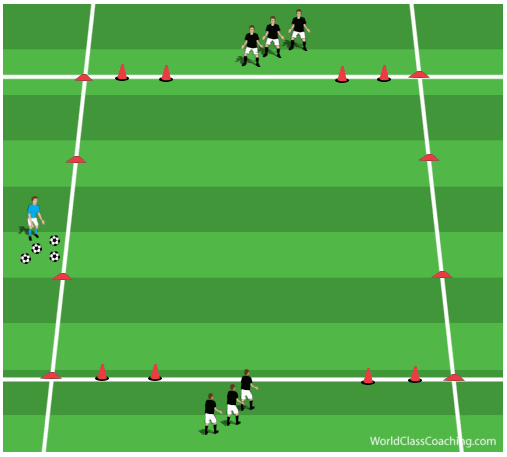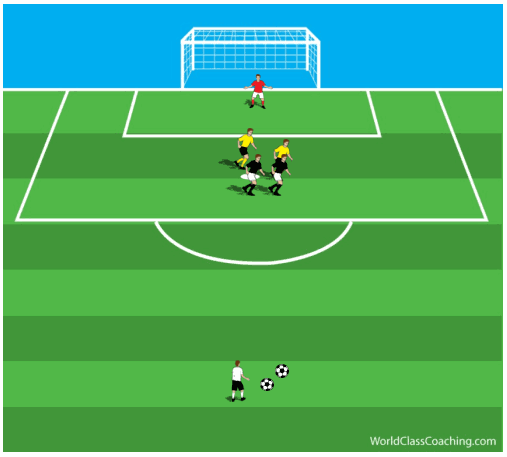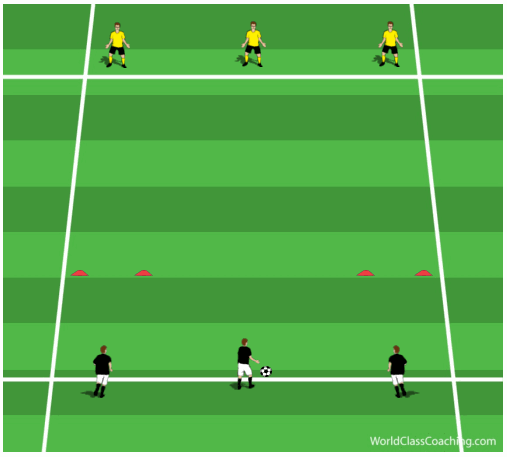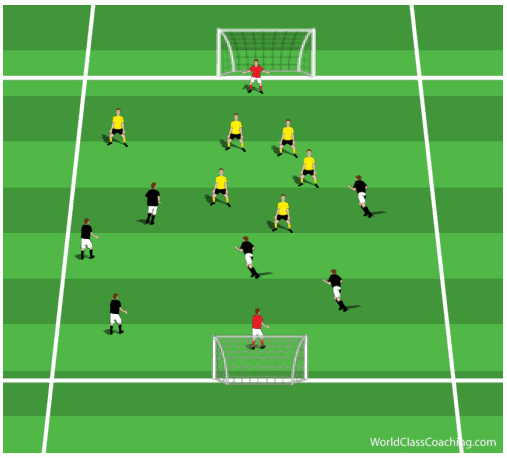Developing Anaerobic Capacity using 1 v 1 Small Sided Games
By Justin Cresser Author of Total Soccer Conditioning: A Ball Orientated Approach
Small sided games are paramount for the development of youth players and the 1 v 1 variation is the simplest form. 1 v 1 situations occur frequently throughout the game, especially in the wide areas of the field, and being able to both defend and attack in these situations are key to the performance of the team. Playing in 1 v 1 encounters requires great speed, footwork and dribbling ability. In fact, many coaches believe that whoever wins the most 1 v 1 battles is likely to win the game.
Today’s exercise focuses on developing anaerobic capacity using a 1 v 1 small sided game with some simple modifications.
Set-up and Directions:
Divide your players into groups of 6 (preferably) or 8 players. For each group, set up the following station: Set up a 15 by 15 yard grid. Place two goals (1.5 yards in width) on both the top and bottom end lines so that each goal is 1 yard in from the sideline. For each grid/group, have half your players line up on the bottom end line and the other half on the top end line so that they are in line with the centre of the grid. The coach should stand on the side with a large supply of balls (Figure 1).
Play is initiated by the coach shouting either ‘One!’ or ‘Two!’ When he shouts one, the players at the
Continue reading



